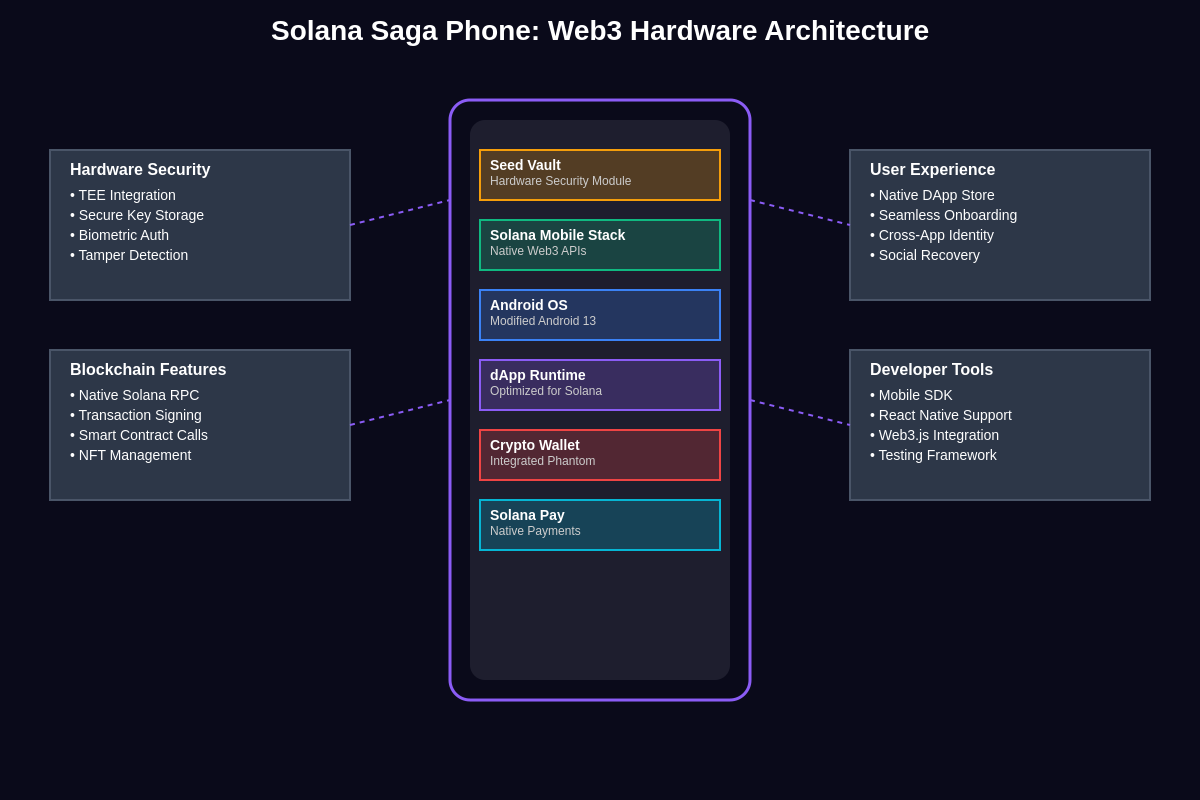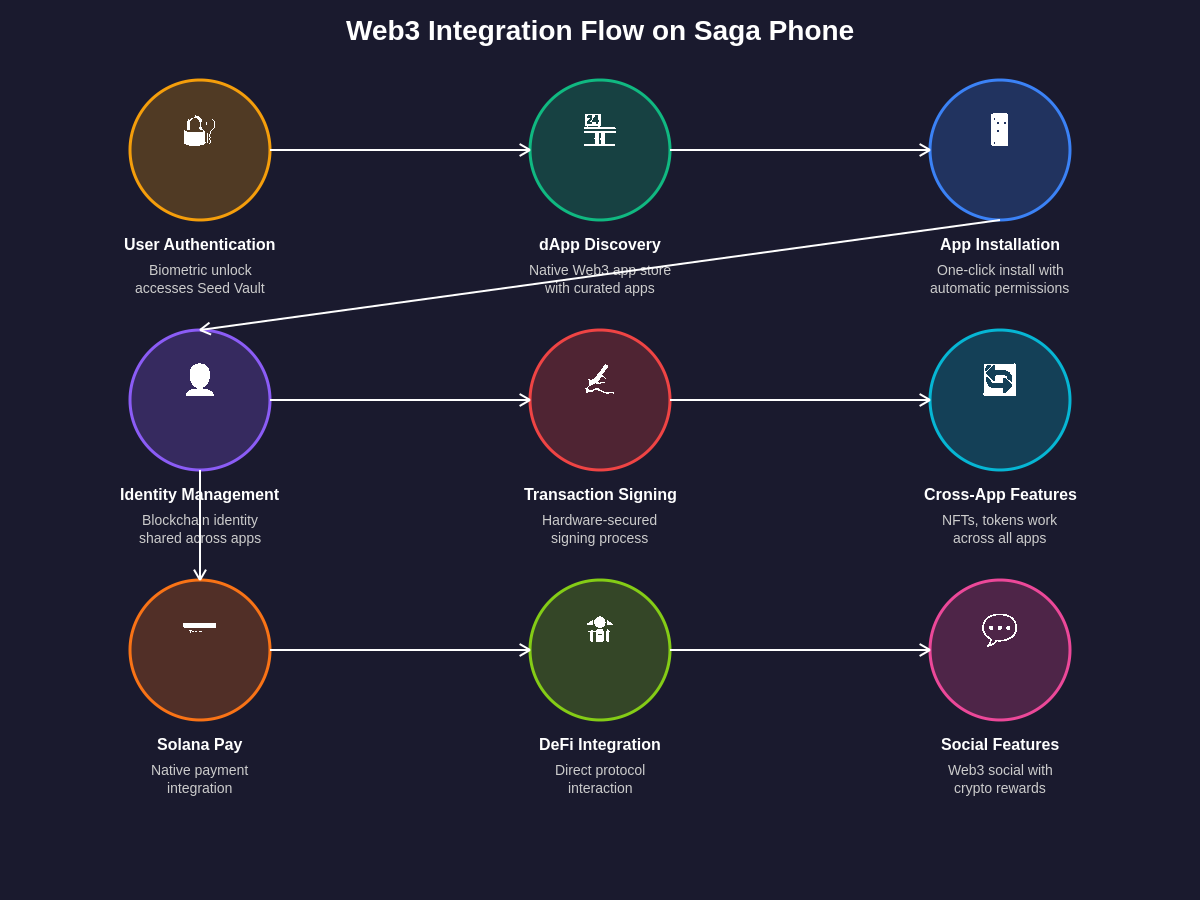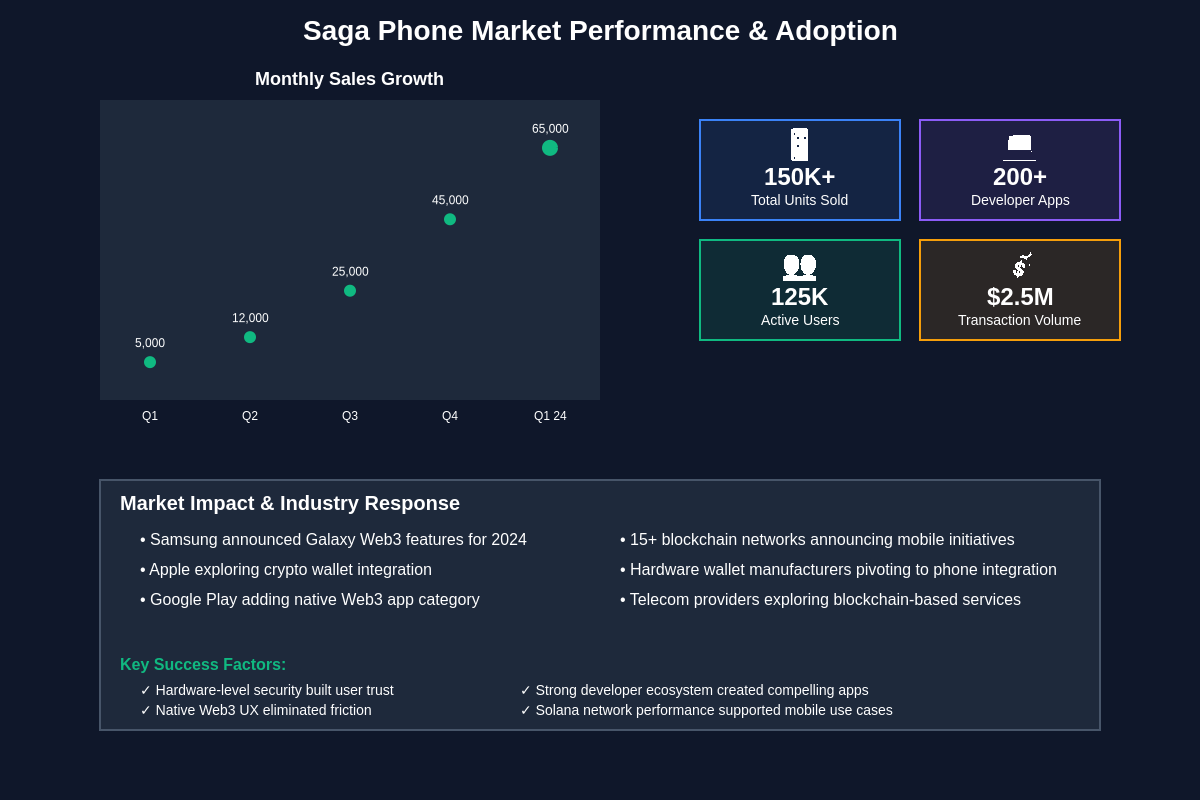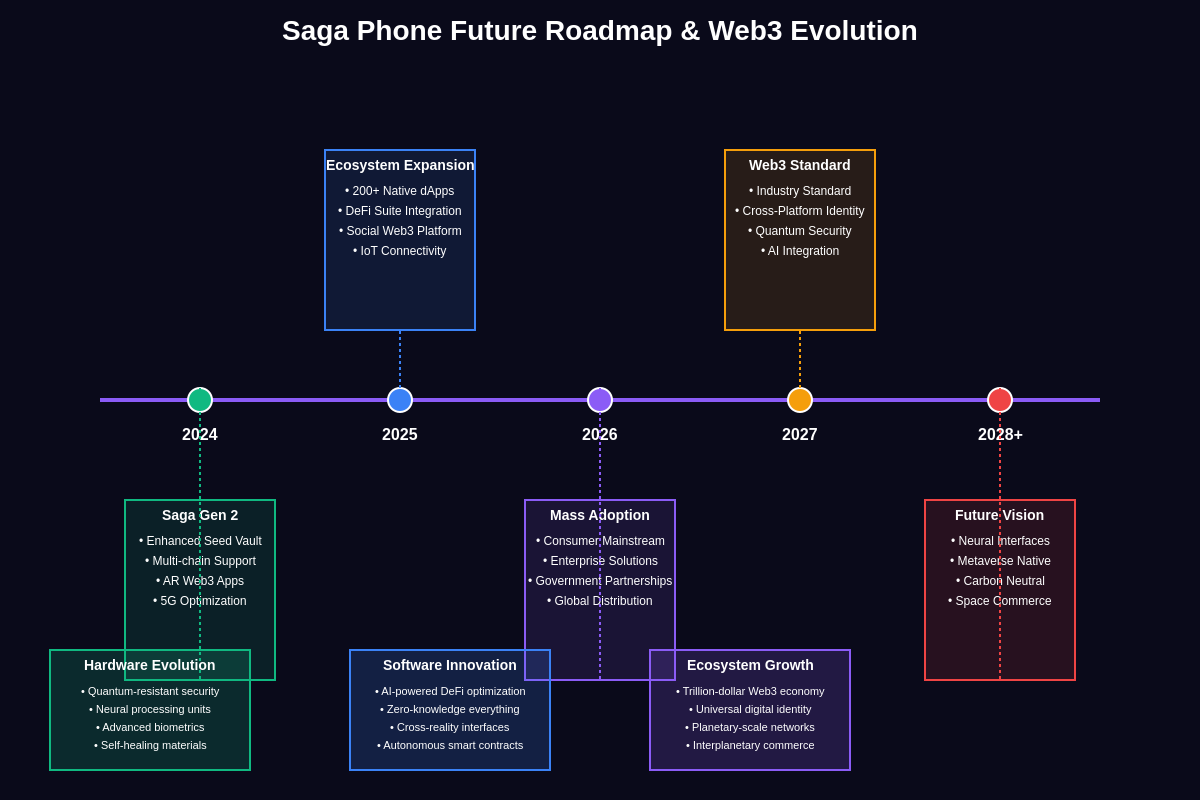Explore advanced trading tools and technical analysis on TradingView
The Revolutionary Convergence of Blockchain and Mobile Technology
Solana’s Saga phone represents a groundbreaking milestone in the integration of Web3 technology with consumer hardware, demonstrating how blockchain infrastructure can be seamlessly woven into everyday mobile devices to create entirely new paradigms for digital ownership, decentralized applications, and cryptocurrency management. This ambitious project has not only challenged traditional notions of smartphone functionality but has also established a compelling blueprint for how major blockchain networks can extend their reach beyond purely digital interfaces into tangible, user-friendly hardware solutions.
The Saga phone emerged from Solana’s recognition that mainstream Web3 adoption required more than just sophisticated blockchain infrastructure and needed to address the fundamental user experience challenges that had historically prevented widespread cryptocurrency adoption among non-technical users. By integrating hardware-level security features, native Web3 capabilities, and intuitive interfaces directly into a premium smartphone, Solana aimed to eliminate many of the friction points that had traditionally made cryptocurrency and decentralized application usage complex and intimidating for average consumers.
The device represents a significant departure from the traditional approach of accessing blockchain networks through web browsers or standalone applications, instead embedding Web3 functionality at the operating system level to create a more seamless and secure user experience. This integration allows users to interact with decentralized applications, manage cryptocurrency portfolios, and participate in blockchain ecosystems with the same ease and familiarity they experience when using traditional mobile applications.
Technical Architecture and Hardware Security Implementation
The technical foundation of the Saga phone centers around its innovative Seed Vault technology, which represents one of the most sophisticated implementations of hardware-based cryptocurrency security ever deployed in a consumer device. The Seed Vault utilizes the phone’s Trusted Execution Environment to create an isolated, tamper-resistant storage system for private keys and seed phrases, ensuring that sensitive cryptographic material never leaves the secure hardware enclave even during transaction signing processes.

This hardware security module operates independently of the main Android operating system, creating multiple layers of protection against both software-based attacks and physical tampering attempts. The system employs advanced cryptographic protocols to ensure that private keys are generated using true random number generation within the secure hardware environment and are never exposed to potentially compromised software layers or network connections.
The integration extends beyond simple key storage to encompass comprehensive transaction management capabilities, with the Seed Vault handling the entire cryptographic signing process within the secure environment while providing user-friendly interfaces for transaction review and approval. This approach eliminates many of the security vulnerabilities associated with software-based wallets while maintaining the convenience and accessibility that users expect from mobile applications.
The phone’s architecture also incorporates specialized networking optimizations designed to enhance interaction with the Solana blockchain, including native support for Solana’s unique consensus mechanisms and optimized data structures that reduce latency and improve transaction throughput when accessing decentralized applications. These optimizations represent a significant advancement over traditional mobile Web3 implementations that rely on generic browser-based interfaces or third-party wallet applications.
Native Web3 Integration and User Experience Innovation
The Saga phone’s approach to Web3 integration goes far beyond simply installing cryptocurrency applications, instead incorporating blockchain functionality at the fundamental level of the device’s user interface and application ecosystem. This deep integration manifests in numerous ways, from native support for NFT display and management within the phone’s gallery application to built-in decentralized application discovery and installation mechanisms that operate similarly to traditional app stores.

The device features a redesigned notification system that provides real-time updates on blockchain transactions, DeFi protocol interactions, and NFT marketplace activities, all while maintaining the security and privacy standards that users expect from their mobile devices. This notification system intelligently filters and prioritizes blockchain-related activities based on user preferences and transaction values, ensuring that important events receive appropriate attention without overwhelming users with excessive alerts.
One of the most innovative aspects of the Saga phone’s user experience design is its approach to application permissions and identity management, which leverages blockchain-based identity systems to provide users with granular control over their digital identities across different applications and services. This system allows users to selectively share specific aspects of their on-chain identity and transaction history with different applications while maintaining complete control over their personal information and privacy.
The phone also introduces novel concepts in mobile commerce through its integration with Solana Pay, enabling seamless cryptocurrency payments both online and at physical points of sale. The real-time price data and market analysis available through TradingView helps users make informed decisions about their cryptocurrency transactions directly from their mobile device. This integration transforms the phone into a comprehensive financial tool that bridges traditional payment systems with emerging cryptocurrency infrastructure.
Market Performance and Adoption Metrics
The commercial success of the Saga phone exceeded most industry expectations, particularly given the challenging market conditions that characterized the cryptocurrency sector during its initial launch period. Initial sales figures demonstrated strong demand from both cryptocurrency enthusiasts and technology early adopters, with the device frequently selling out during its early availability periods and generating significant waiting lists in multiple markets.

The phone’s success was particularly notable in markets with high cryptocurrency adoption rates, where users demonstrated strong appreciation for the integrated Web3 functionality and hardware security features. Sales data indicated that Saga phone users engaged with decentralized applications at significantly higher rates than users accessing the same applications through traditional smartphones, suggesting that the integrated user experience successfully reduced barriers to Web3 adoption.
Secondary market performance for the Saga phone also demonstrated the device’s appeal among collectors and technology enthusiasts, with limited edition variants and early production units commanding premium prices well above their original retail values. This secondary market activity reflected both the scarcity of the devices and the growing recognition of their significance in the evolution of Web3 technology.
The device’s impact extended beyond direct sales figures to influence broader market trends in Web3 hardware development, with several major smartphone manufacturers announcing their own blockchain integration initiatives in response to the Saga phone’s market reception. This competitive response validated Solana’s strategic vision while highlighting the potential for Web3 hardware integration to become a significant differentiating factor in the consumer electronics market.
Developer Ecosystem and Application Development
The Saga phone’s developer ecosystem represents one of its most significant contributions to the broader Web3 space, providing mobile application developers with unprecedented access to blockchain functionality through native APIs and development tools. The Solana Mobile Stack, the comprehensive development framework created specifically for the Saga phone, offers developers the ability to create applications that leverage hardware-level security, seamless cryptocurrency transactions, and deep blockchain integration without requiring extensive cryptographic expertise.
This developer-friendly approach has resulted in the creation of numerous innovative applications that would not have been possible on traditional mobile platforms, including games that utilize NFTs as in-game assets with true ownership mechanics, social media applications that integrate cryptocurrency tipping and token-based community governance, and productivity tools that enable decentralized file storage and collaboration.
The mobile-first approach to decentralized application development enabled by the Saga phone has also influenced the broader Solana ecosystem, with many developers optimizing their applications specifically for mobile use cases and creating new interaction patterns that take advantage of mobile devices’ unique capabilities such as biometric authentication, location services, and camera functionality.
The success of the Saga phone’s developer ecosystem demonstrates the potential for specialized hardware to accelerate Web3 adoption by reducing development complexity and providing developers with powerful tools for creating user-friendly blockchain applications. The lessons learned from this ecosystem development are likely to influence future Web3 hardware initiatives and contribute to the broader evolution of decentralized application development practices.
Integration with Solana Ecosystem and DeFi Applications
The Saga phone’s deep integration with the broader Solana ecosystem creates unique opportunities for users to participate in decentralized finance applications with unprecedented convenience and security. Native support for popular Solana-based DeFi protocols enables users to engage in lending, borrowing, yield farming, and liquidity provision activities directly from their mobile devices without the security concerns typically associated with mobile Web3 interactions.
The phone’s hardware security features provide particular advantages for DeFi participation, as users can confidently interact with complex smart contracts knowing that their private keys remain secure within the device’s hardware enclave. This security assurance has led to increased mobile participation in Solana DeFi protocols, with many users reporting greater comfort engaging in sophisticated financial activities through the Saga phone interface compared to traditional mobile Web3 solutions.
The integration also extends to Solana’s NFT ecosystem, with the phone providing native support for NFT display, transfer, and marketplace interactions. Users can showcase their NFT collections through the device’s gallery application, participate in NFT trading directly through integrated marketplace interfaces, and even utilize NFTs for device personalization and application access control.
The phone’s relationship with the broader Solana ecosystem also creates unique opportunities for cross-protocol interactions, enabling users to seamlessly move assets between different Solana-based applications and protocols while maintaining the security and convenience of the integrated mobile experience. These capabilities position the Saga phone as more than just a hardware wallet, instead functioning as a comprehensive gateway to the entire Solana blockchain ecosystem.
Competitive Landscape and Industry Impact
The introduction of the Saga phone significantly altered the competitive landscape for Web3 hardware solutions, establishing new standards for blockchain integration in consumer devices and inspiring numerous competing initiatives from both established technology companies and emerging startups. The device’s success demonstrated that there was substantial market demand for integrated Web3 hardware solutions, leading to increased investment and development activity across the entire sector.
Traditional smartphone manufacturers began exploring their own blockchain integration strategies in response to the Saga phone’s market reception, with several major brands announcing partnerships with blockchain networks and the development of native Web3 capabilities. This competitive response validated Solana’s strategic approach while also contributing to broader industry momentum toward Web3 hardware integration.
The success of the Saga phone also influenced the development of other Web3 hardware categories, including Web3-enabled tablets, laptops, and even automotive systems, as manufacturers recognized the potential for blockchain integration to create new product differentiation opportunities and revenue streams. The technical and user experience innovations pioneered by the Saga phone provided important reference implementations for these broader hardware integration initiatives.
The device’s impact on the broader cryptocurrency industry extended beyond hardware considerations to influence application development practices, user experience design standards, and security implementation approaches across the entire Web3 ecosystem. The lessons learned from the Saga phone’s development and deployment continue to inform best practices for Web3 hardware integration and mobile blockchain application development.
Security Features and Privacy Protection
The Saga phone’s security architecture represents a significant advancement in mobile cryptocurrency security, implementing multiple layers of protection that address both the unique risks associated with mobile devices and the specific security requirements of Web3 applications. The device’s security model centers around the principle of hardware-based isolation, ensuring that sensitive cryptographic operations remain protected even if other parts of the device are compromised.
The Seed Vault technology at the heart of the phone’s security system utilizes advanced cryptographic techniques including secure key generation, tamper-resistant storage, and isolated transaction signing to provide institutional-grade security in a consumer device format. This security architecture has been independently audited by leading cybersecurity firms and has demonstrated resistance to both software-based attacks and sophisticated physical tampering attempts.
Privacy protection features built into the Saga phone enable users to maintain control over their personal information while participating in blockchain networks that are inherently transparent. The device implements advanced privacy techniques including selective disclosure mechanisms, zero-knowledge proof generation, and encrypted communication protocols to ensure that users can benefit from Web3 functionality without sacrificing their privacy expectations.
The phone’s approach to application permissions and data sharing also reflects modern privacy principles, with users maintaining granular control over which applications can access their blockchain identities, transaction histories, and personal information. This privacy-first approach has been particularly appreciated by users who want to participate in Web3 ecosystems while maintaining control over their digital footprints.
Future Roadmap and Technological Evolution
Solana’s roadmap for the Saga phone and its future iterations demonstrates the company’s commitment to continuous innovation in Web3 hardware integration, with planned updates focusing on enhanced performance, expanded blockchain network support, and new user experience features. Future versions of the device are expected to incorporate advances in hardware security, battery technology, and mobile computing performance to provide even more seamless Web3 experiences.

The development roadmap also includes plans for expanded ecosystem integration, with future updates potentially supporting additional blockchain networks beyond Solana while maintaining the security and user experience advantages that made the original device successful. This multi-chain approach reflects the evolving nature of the Web3 landscape and the importance of interoperability in blockchain technology adoption.
Advanced technical analysis tools and market data will likely play an increasingly important role in future versions of the Saga phone, providing users with sophisticated trading and investment analysis capabilities directly integrated into their mobile Web3 experience. This integration of professional-grade financial analysis tools with mobile blockchain access represents a significant opportunity for enhancing the device’s value proposition.
Research and development efforts are also focusing on emerging technologies such as augmented reality Web3 applications, Internet of Things blockchain integration, and advanced artificial intelligence features that could further differentiate future Web3 hardware solutions and create new use cases for blockchain technology in mobile devices.
Lessons Learned and Industry Implications
The development and deployment of the Saga phone have provided valuable insights into the challenges and opportunities associated with Web3 hardware integration, offering important lessons for both the blockchain industry and the broader consumer electronics sector. One of the most significant lessons has been the importance of user experience design in making complex blockchain technology accessible to mainstream consumers.
The success of the Saga phone demonstrates that consumers are willing to adopt Web3 technology when it is presented through familiar interfaces and integrated into devices they already use regularly. This finding has important implications for the broader blockchain industry, suggesting that mainstream adoption may depend more on seamless integration and user-friendly design than on technical sophistication or ideological alignment with decentralization principles.
The project also highlighted the critical importance of developer ecosystems in creating compelling use cases for Web3 hardware, with the success of the Saga phone closely tied to the availability of high-quality applications that take advantage of its unique capabilities. This observation suggests that future Web3 hardware initiatives should prioritize developer tools and ecosystem development alongside hardware innovation.
The experience of developing and marketing the Saga phone also provided insights into the regulatory considerations associated with Web3 hardware, including compliance requirements, international distribution challenges, and the need for clear communication with regulators about the device’s capabilities and security features. These regulatory learnings are likely to inform future Web3 hardware development and help establish best practices for the industry.
Global Market Expansion and Localization Strategies
The international expansion of the Saga phone revealed important insights about global Web3 adoption patterns and the varying regulatory environments that affect blockchain hardware distribution. Different regions demonstrated markedly different levels of enthusiasm for Web3-integrated devices, with adoption rates correlating strongly with existing cryptocurrency usage patterns and regulatory clarity.
Markets with well-established cryptocurrency trading communities and clear regulatory frameworks showed the strongest adoption rates for the Saga phone, while regions with restrictive cryptocurrency regulations or limited blockchain infrastructure demonstrated more limited interest. These geographic patterns provide important guidance for future Web3 hardware deployment strategies and highlight the importance of regulatory engagement in successful market expansion.
Localization efforts for the Saga phone also revealed the need for region-specific Web3 features and applications, with different markets showing preferences for different types of blockchain applications and use cases. This localization experience demonstrates the importance of cultural sensitivity and local market understanding in successful Web3 hardware deployment.
The device’s international success also contributed to broader conversations about Web3 technology adoption and regulation in various jurisdictions, with several governments and regulatory bodies citing the Saga phone as an example of responsible blockchain technology integration that balances innovation with consumer protection.
Disclaimer: This article is for informational purposes only and does not constitute financial advice. Cryptocurrency investments and Web3 technologies carry inherent risks, and readers should conduct their own research and consult with financial advisors before making investment decisions. The performance of blockchain-based devices and applications can be volatile and unpredictable. Always consider your risk tolerance and investment goals before participating in cryptocurrency markets or purchasing Web3-enabled hardware.